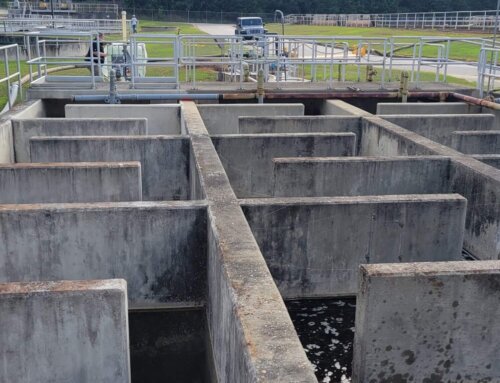Proper diversion of water is crucial in any community that experiences flooding issues during or after storms. Runoff from storms often causes damage to rivers and streams in the vicinity, and city sewer systems can quickly become overwhelmed by runoff.
One of the most straightforward ways to handle stormwater is through creation of a water detention system that takes care of the water near the source, so it doesn’t disperse and cause damage. Construction of a retention pond is a key way to prevent the flooding and erosion that can occur when water is allowed to run freely after a storm.
What are Retention Ponds?
Retention ponds are one solution to the problem of stormwater. These ponds collect stormwater as it runs off from the watershed, and they release them at a predetermined and slower rate via a low-flow orifice to avoid causing damage to the surrounding environment. Retention ponds, which are designed to contain water at all times, are similar to detention ponds, which are designed to let water flow out until they’re completely dry. In terms of construction, that difference means that detention ponds have their orifice at the bottom of the pond, while retention ponds have higher outflow points that allow some water to remain in the pond at all times.
How Do Retention Ponds Work?
Retention ponds work because the outflow is controlled and restricted to normal levels for the runoff rate in the immediate area. Pipes, weirs and various orifices may all be part of the construction to help control the outflow. If large underground pipes are used to store the stormwater runoff, then they feed into a small pipe which is deliberately restricted in size to control the amount of outflow as needed.
Design of a retention pond depends in part of how much stormwater may reasonably be expected during a normal storm season. Risers and weirs of various sizes and heights are used to control outflow while still maintaining an appropriate level of water in the pond during drier weather.
To keep a retention pond working properly, it’s vital to keep the outflow orifice flowing freely without any blockage or clogging from debris. That requires removing not only debris but also sediment on a regular basis, with greater frequency during storm season. Other required maintenance includes preventing overgrowth of any vegetation around the pond as well as keeping an eye open for erosion along the pond’s banks.
Why Do Civil Engineers Use Retention Ponds?
Retention ponds are particularly important in urban areas that are rife with concrete and asphalt, which don’t allow stormwater to be absorbed into the earth. Because the runoff of stormwater across these hard surfaces is so fast, diversion is required. Retention and detention ponds thus become crucial to control the flow of floods.
Retention ponds can also facilitate the control of sediment and pollutants, as the natural process of the pond works to process the water without a lot of additional equipment required. If the ponds are surrounded by natural vegetation, they can also provide an aesthetic feature to a neighborhood and can encourage and attract natural fauna to an area by providing a safe habitat near water. In many cases, retention ponds can also be double-purposed to serve as recreational facilities.
In developed urban areas, diversion of stormwater is an important issue. In fact, developers are often required by cities to maintain the pre-development discharge of water from a site, and retention ponds can be a relatively simple solution to this problem, since they prevent runoff without damage to the environment.
If you’re facing issues with stormwater runoff, Keck & Wood has a great depth of experience handling stormwater improvements, both as capital improvements and on an emergency basis. Contact us today about all your stormwater management concerns.







Leave A Comment